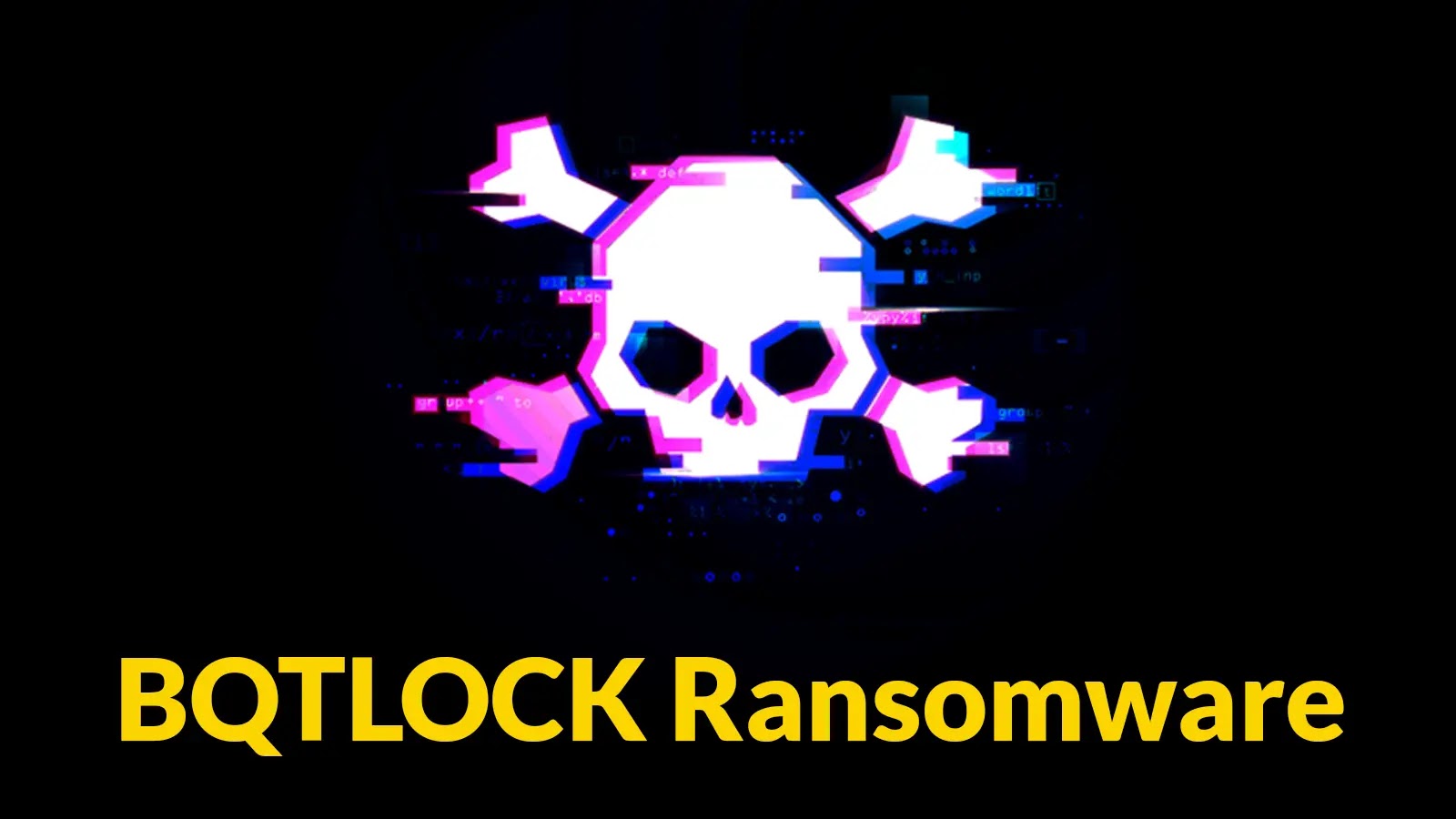
BQTLOCK Ransomware Operates as RaaS With Advanced Evasion Techniques
BQTLOCK Ransomware: A New RaaS Threat and Its Evasion Tactics
The cybersecurity landscape has recently witnessed the emergence of BQTLOCK, a sophisticated new ransomware strain operating under an extensive Ransomware-as-a-Service (RaaS) model. Active since mid-July 2025, BQTLOCK significantly democratizes access to advanced encryption capabilities for cybercriminals, signaling a concerning evolution in ransomware distribution and sophistication.
Security professionals and IT teams must grasp the intricacies of BQTLOCK’s operation, its association with “ZerodayX” (allegedly the leader of the pro-Palestinian hacktivist group Liwaa Mohammed), and its advanced evasion techniques to fortify their defenses effectively.
Understanding the BQTLOCK RaaS Model
BQTLOCK’s RaaS model lowers the barrier to entry for aspiring cybercriminals, enabling them to launch ransomware attacks without needing deep technical expertise in malware development. This service-oriented approach means:
- Wider Reach: A larger pool of affiliates can deploy BQTLOCK, increasing the potential attack surface.
- Rapid Evolution: The centralized development by BQTLOCK’s creators allows for quicker updates and new feature integration, including enhanced evasion techniques.
- Profit Sharing: Affiliates typically pay a subscription fee or a percentage of the ransom collected, incentivizing widespread deployment.
This “democratization” of advanced ransomware capabilities makes BQTLOCK a significant threat, as it amplifies the reach and impact of sophisticated attacks.
Advanced Evasion Techniques Employed by BQTLOCK
A key differentiator of BQTLOCK is its incorporation of advanced evasion techniques designed to bypass traditional security measures. While specific CVEs related to BQTLOCK’s evasion are not yet publicly detailed as of this writing, typical evasion tactics seen in similar advanced ransomware strains include:
- Anti-Analysis Features: BQTLOCK likely employs checks to detect if it’s running in a virtual machine (VM) or sandbox environment, terminating execution if such an environment is detected. This prevents security researchers from easily analyzing its behavior.
- Obfuscation and Polymorphism: The malware’s code may be heavily obfuscated to hide its true functionality, making static analysis difficult. Polymorphic capabilities allow the malware to alter its code signature with each infection, evading signature-based detection.
- Process Injection and Hollowing: BQTLOCK might inject malicious code into legitimate running processes or hollow out legitimate processes to run its malicious code, blending in with normal system operations and evading detection by behavior-based security tools.
- Timestomping and File Attribute Manipulation: To avoid detection based on file creation or modification times, BQTLOCK could alter these timestamps to mimic legitimate system files, making it harder for forensic analysts to trace its activities.
- Disabling Security Software: The ransomware may attempt to identify and disable endpoint detection and response (EDR) solutions, antivirus software, and other security tools before initiating encryption.
Association with ‘ZerodayX’ and Hacktivism
The alleged association of BQTLOCK with ‘ZerodayX’, the reported leader of the pro-Palestinian hacktivist group Liwaa Mohammed, adds another layer of concern. This connection suggests a potential for politically motivated attacks alongside financially driven ones. Hybrid threat actors, combining cybercrime tactics with hacktivist motivations, can pose unpredictable and severe challenges, as their objectives extend beyond mere financial gain.
Remediation Actions and Proactive Defense
Mitigating the threat posed by BQTLOCK requires a multi-layered and proactive defense strategy. Organizations should focus on preventing initial compromise, detecting suspicious activity, and ensuring robust recovery capabilities.
- Robust Backup Strategy: Implement the 3-2-1 backup rule: at least three copies of your data, stored on two different media types, with one copy offsite and offline. Regularly test backup and recovery procedures.
- Patch Management: Keep all operating systems, applications, and network devices patched and updated to close known vulnerabilities. Regularly check for critical security updates from vendors.
- Endpoint Detection and Response (EDR): Deploy and configure EDR solutions that provide advanced behavioral analysis and threat hunting capabilities on endpoints.
- Network Segmentation: Isolate critical systems and sensitive data from the broader network through segmentation. This limits lateral movement even if one segment is compromised.
- Principle of Least Privilege: Grant users and applications only the minimum necessary permissions to perform their functions.
- Multi-Factor Authentication (MFA): Implement MFA for all remote access services, privileged accounts, and critical systems to prevent unauthorized access even if credentials are stolen.
- Employee Security Awareness Training: Educate employees about phishing, social engineering tactics, and the importance of reporting suspicious emails or activities. Phishing is a primary vector for ransomware delivery.
- Incident Response Plan: Develop, test, and regularly update a comprehensive incident response plan for ransomware attacks. This should include communication protocols, roles and responsibilities, and technical recovery steps.
- Threat Intelligence: Stay informed about the latest ransomware trends, Tactics, Techniques, and Procedures (TTPs) used by threat actors, and specific details about strains like BQTLOCK.
Tools for Detection and Mitigation
Leveraging appropriate cybersecurity tools is crucial for detecting and mitigating ransomware like BQTLOCK.
| Tool Name | Purpose | Link |
|---|---|---|
| Endpoint Detection and Response (EDR) Solutions | Behavioral analysis, threat hunting, incident response on endpoints. | (Vendor Dependent e.g., CrowdStrike, SentinelOne) |
| Vulnerability Scanners | Identify unpatched software and configuration weaknesses across the network. | (e.g., Tenable.io, Qualys) |
| Network Intrusion Detection/Prevention Systems (NIDS/NIPS) | Monitor network traffic for suspicious patterns and block malicious activity. | (e.g., Snort, Suricata) |
| Security Information and Event Management (SIEM) | Centralized logging and correlation of security events for real-time threat detection. | (e.g., Splunk, IBM QRadar) |
| Backup and Recovery Solutions | Ensure data resilience and rapid restoration after an attack. | (e.g., Veeam, Rubrik) |
Conclusion
The emergence of BQTLOCK ransomware, operating as a sophisticated RaaS model with advanced evasion techniques and an alleged connection to hacktivist groups, underscores the dynamic and escalating nature of cyber threats. Proactive defense, continuous monitoring, and a robust incident response capability are no longer optional but essential for organizations to maintain resilience against such evolving dangers. Understanding the threat, implementing comprehensive security measures, and staying abreast of the latest TTPs will be critical in safeguarding digital assets from BQTLOCK and future ransomware variants.





